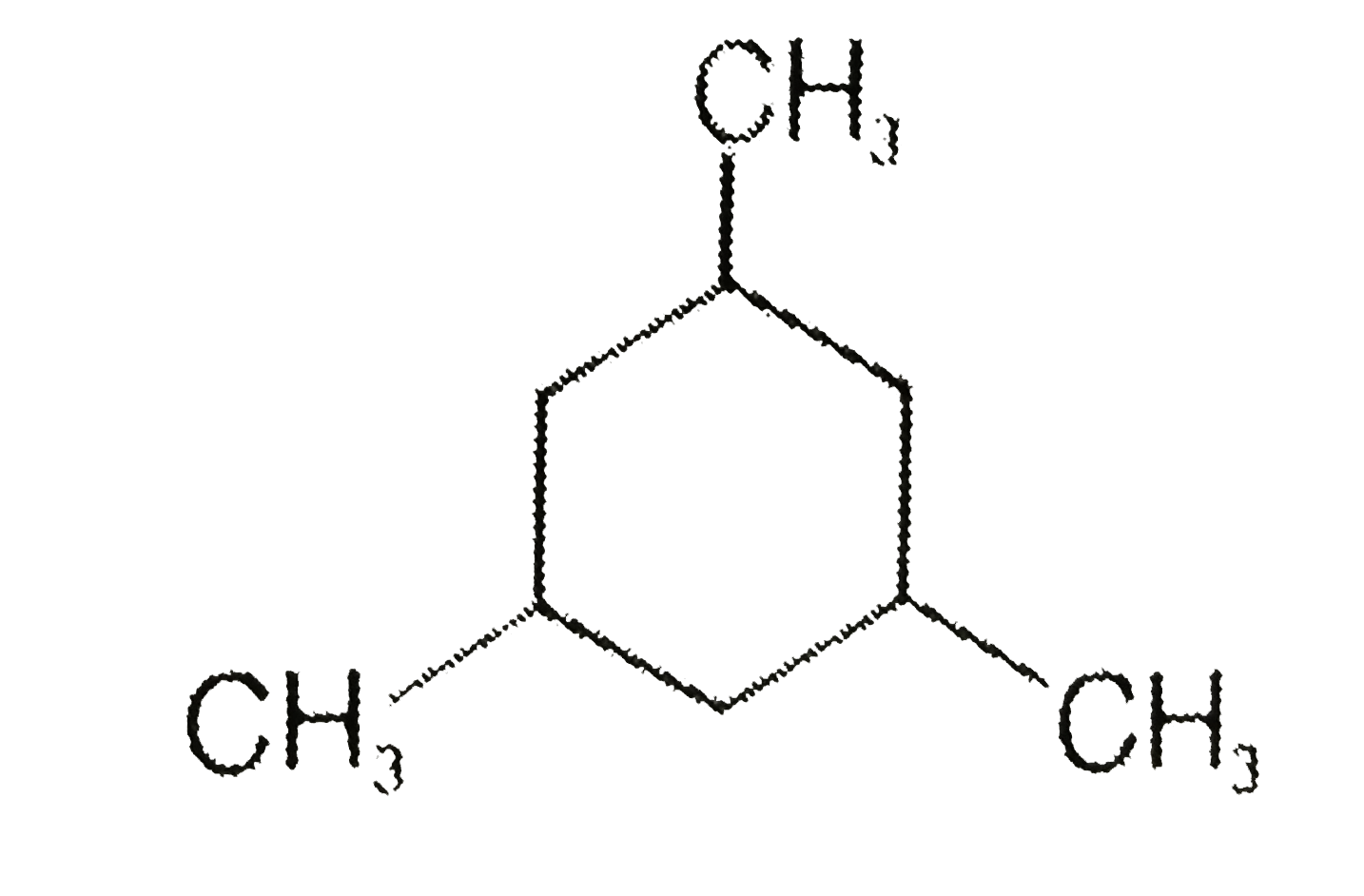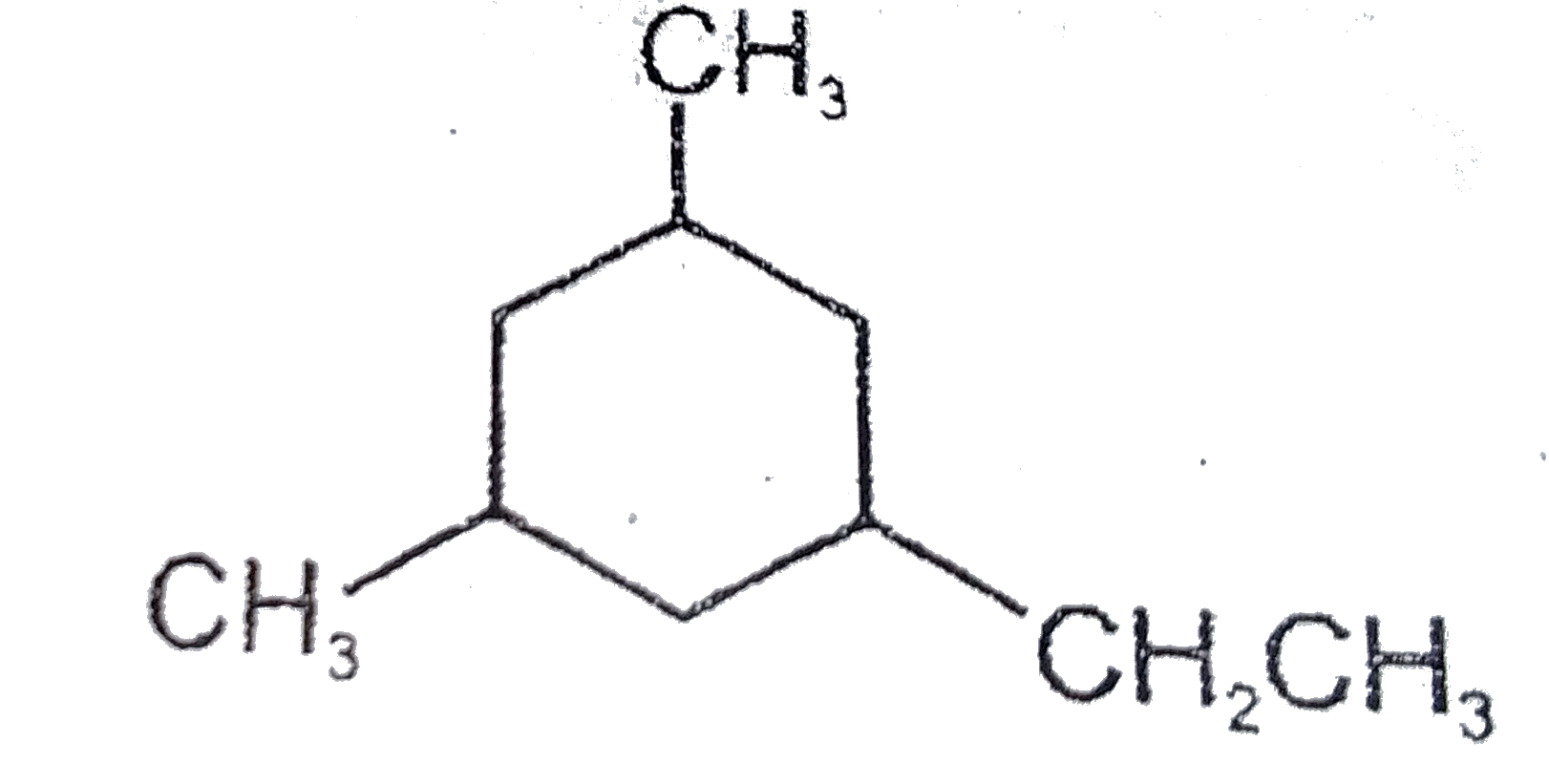C2H5Cl+Nadry ether−−−−−−−→−NaCIA. How many isomers are formed by monohalogenation of A including stereo isomers
1
2
3
4
The correct Answer is:C
To solve the problem of how many isomers are formed by the monohalogenation of butane (C₂H₅Cl + Na → A, where A = butane), we will follow these steps:
Step 1: Identify the structure of A
The reaction given is a Wurtz reaction where ethyl chloride (C₂H₅Cl) reacts with sodium (Na) in dry ether to form butane (C₄H₁₀). The structure of butane can be represented as:
CH3CH2CH2CH3
Step 2: Understand monohalogenation
Monohalogenation refers to the substitution of one hydrogen atom in butane with a halogen atom (in this case, chlorine). This can occur at different positions in the butane molecule.
Step 3: Identify possible positions for halogenation
1. 1-chlorobutane: Chlorine replaces one of the terminal hydrogen atoms.
- Structure: CH₃-CH₂-CH₂-CH₂Cl
2. 2-chlorobutane: Chlorine replaces one of the hydrogen atoms on the second carbon.
- Structure: CH₃-CH(Cl)-CH₂-CH₃
Step 4: Determine stereoisomers
For 2-chlorobutane, there is a possibility of forming stereoisomers because it has a chiral center (the second carbon). The two enantiomers of 2-chlorobutane are:
- (R)-2-chlorobutane
- (S)-2-chlorobutane
Step 5: Count all isomers
Now, we can summarize the isomers formed:
1. 1-chlorobutane (achiral)
2. 2-chlorobutane (chiral, with 2 enantiomers)
Thus, the total isomers including stereoisomers are:
- 1-chlorobutane: 1 isomer
- 2-chlorobutane: 2 enantiomers
Final Count
Total isomers = 1 (from 1-chlorobutane) + 2 (from 2-chlorobutane) = 3 isomers.
Conclusion
The total number of isomers formed by the monohalogenation of A (butane) including stereoisomers is 3.
---
The reaction given is a Wurtz reaction where ethyl chloride (C₂H₅Cl) reacts with sodium (Na) in dry ether to form butane (C₄H₁₀). The structure of butane can be represented as:
CH3CH2CH2CH3
Monohalogenation refers to the substitution of one hydrogen atom in butane with a halogen atom (in this case, chlorine). This can occur at different positions in the butane molecule.
1. 1-chlorobutane: Chlorine replaces one of the terminal hydrogen atoms.
- Structure: CH₃-CH₂-CH₂-CH₂Cl
2. 2-chlorobutane: Chlorine replaces one of the hydrogen atoms on the second carbon.
- Structure: CH₃-CH(Cl)-CH₂-CH₃
For 2-chlorobutane, there is a possibility of forming stereoisomers because it has a chiral center (the second carbon). The two enantiomers of 2-chlorobutane are:
- (R)-2-chlorobutane
- (S)-2-chlorobutane
Now, we can summarize the isomers formed:
1. 1-chlorobutane (achiral)
2. 2-chlorobutane (chiral, with 2 enantiomers)
- 1-chlorobutane: 1 isomer
- 2-chlorobutane: 2 enantiomers
Total isomers = 1 (from 1-chlorobutane) + 2 (from 2-chlorobutane) = 3 isomers.
The total number of isomers formed by the monohalogenation of A (butane) including stereoisomers is 3.
Topper's Solved these Questions
- BOOK - ALLENCHAPTER - TEST PAPERSEXERCISE - CHEMISTRY25videos
TEST PAPERS
- BOOK - ALLENCHAPTER - TEST PAPERSEXERCISE - MATHEMATICS2videos
TEST PAPERS
- BOOK - ALLENCHAPTER - TEST PAPERSEXERCISE - part-2 Chemisty18videos
TEST PAPERS
- BOOK - ALLENCHAPTER - TEST PAPER 4EXERCISE - CHEMISTRY45videos
TEST PAPER 4
- BOOK - ALLENCHAPTER - THERMODYNAMICS EXERCISE - EXERCISE -418videos
THERMODYNAMICS
Similar Questions
Knowledge Check
- Question 1 - Select One
How many isomers are possible for the alkyl group −C4H9
A2B3C4D5
How many isomers are possible C7H16 ?
View SolutionHow many products (structural isomers only ) are formed by monochlorination of given compound.
 View Solution
View SolutionC2H5Cl + KCN →X Hydroysis−−−−−→Y, 'X' and 'Y' are:
View SolutionHow many alkynes isomers are formed with molecular formula C4H6 ?
View SolutionCH3−CH2−CI+NaIDry acetone−−−−−−→[X]+NaCI Product [X] is -
View SolutionThe number of isomers (including stereoisomers) of C5H10 are
View Solutionhow many structural isomers are possible for C6H14?
View Solution



